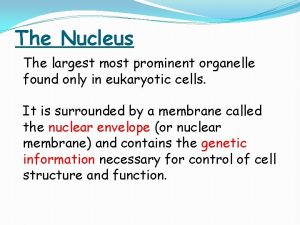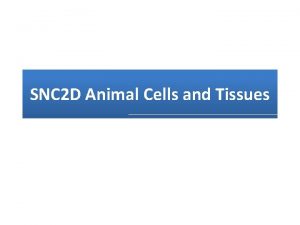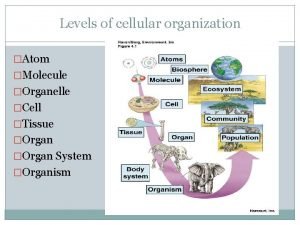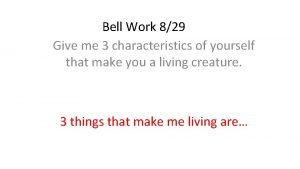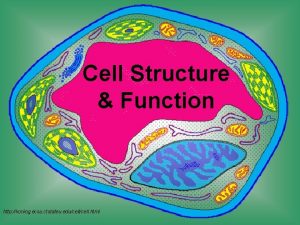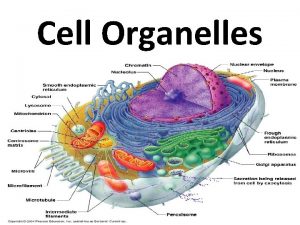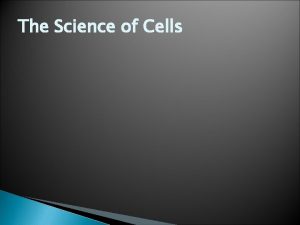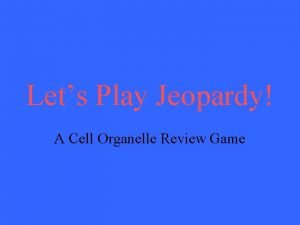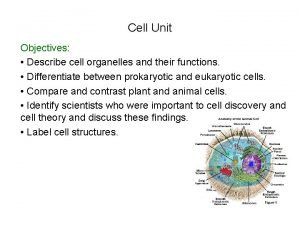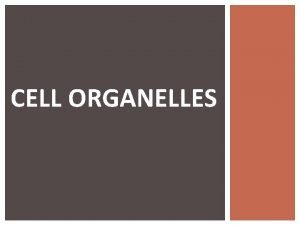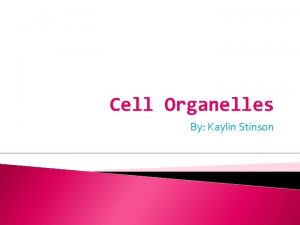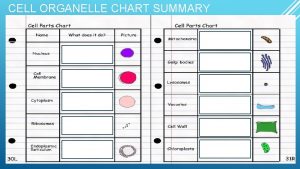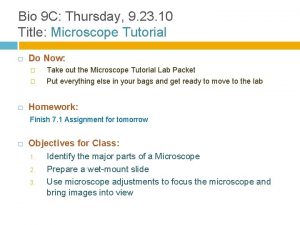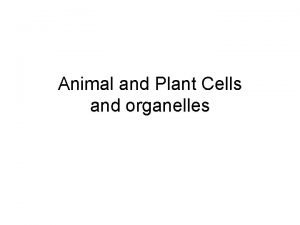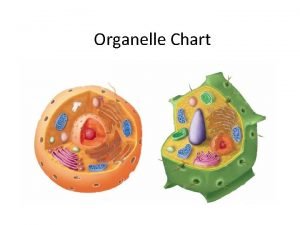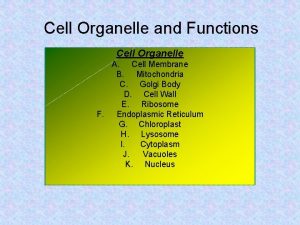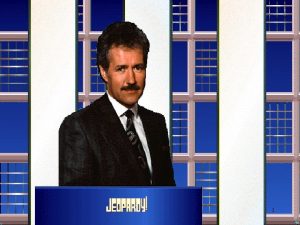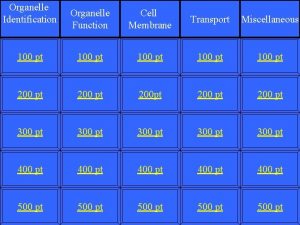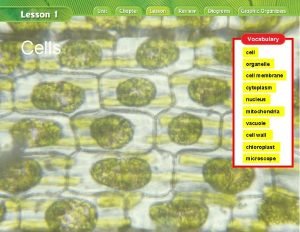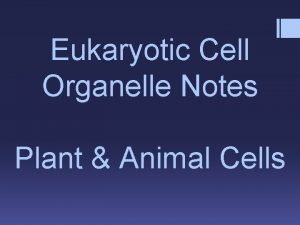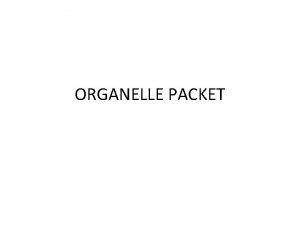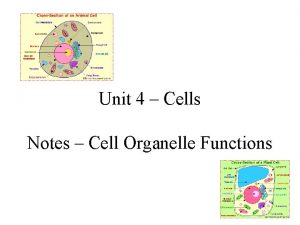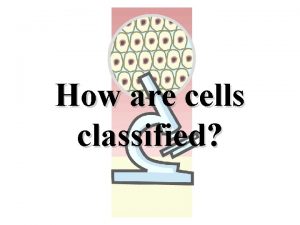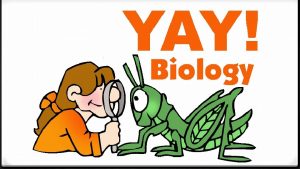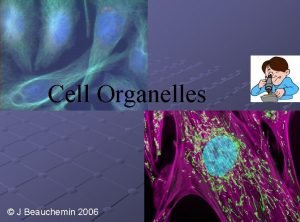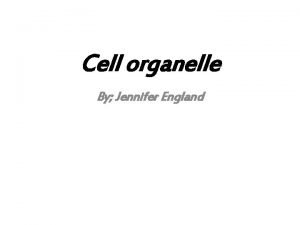Chapter 2 Cells Organelle Name for any cell



















- Slides: 19

Chapter 2 Cells

Organelle Name for any cell part

Nucleus Ribosomes Mitochondria 1. cell membrane – outer part of cell that lets things in and out. 2. cytoplasm – gel-like material that cell parts float in. 3. nucleus – directs all the cells activities. 4. mitochondria – breaks down food & releases energy. 5. ribosomes – makes protein

1. Brain Pop Lysosomes Golgi Bodies ER 6. endoplasmic reticulum (ER) – tunnels that move things around inside the cell. 7. golgi bodies – sacs that move protein outside the cell. 8. vacuoles – storage place. 9. lysosomes – digest waste for cell.

Chloroplast Cell Wall Plant cells have a cell wall & chloroplast and animal cells do not!!!

Tissue group of cells that work together. Organ groups of tissues that work together. Organ System Organism 1. Video: Cells work together

The Microscope 1. Video History of Microscope *Must have a microscope to see cells and viruses. *Antonie van Leeuwenhoek made the 1 st microscope

1. Video: microscope 2. How to make a wet mount * Compound Light Microscope = microscope we use in Life Science. * Magnification = Multiply the eyepiece times the nosepiece.

Eyepiece 10 X 1. Electron Microscope Nosepiece 40 X 10 X 40 400 TOTAL MAGNIFICATION

* Robert Hooke= 1 st person to see cells. Hooke : 25 S and S 3: 00 * Schleiden and Schwann = discovered all living things have cells

Cell Theory 1. All organisms have 1 or more cells. 2. Cells are the basic units of structure in all organisms. 3. All cells come from other cells.

Viruses Virus 1. Virus infecting cell 2. Virus pictures – a strand of hereditary material surrounded by a protein coat.

Host Cell A living cell where a virus reproduces. 2000 X

1. Active Virus –Enters cell and reproduces until the cell is destroyed. 2. Latent Virus – Enters cell but doesn’t start making new viruses. However, at any time he can become active.

Vaccine Edward Jenner created the 1 st vaccine in 1796.

Gene Therapy – Substituting good DNA for incorrect DNA.


Osmosis When water moves into and out of the cell by going through the cell membrane.

Diffusion Video @: 22 When molecules move from areas where there are more of them to areas where there are fewer of them.
 Which organelle prepares proteins for specific jobs
Which organelle prepares proteins for specific jobs Cell structures cell organelle graphic organizer
Cell structures cell organelle graphic organizer Cell organelle jeopardy
Cell organelle jeopardy Most prominent organelle in eukaryotic cells
Most prominent organelle in eukaryotic cells Nondisjunction in meiosis
Nondisjunction in meiosis Molecule organelle cell
Molecule organelle cell Atom molecule organelle cell tissue
Atom molecule organelle cell tissue Cell tissue
Cell tissue Cell organelles song
Cell organelles song Garbage collector animal cell organelle
Garbage collector animal cell organelle Riddle about biomolecules
Riddle about biomolecules Cell organelle webquest
Cell organelle webquest Cell organelle review game
Cell organelle review game 7 parts of a cell
7 parts of a cell Cell organelle
Cell organelle Animal cells have
Animal cells have Cell organelle graphic organizer answer key
Cell organelle graphic organizer answer key Organelle speed dating
Organelle speed dating Corn plant
Corn plant Mitochondria organelle facts
Mitochondria organelle facts



